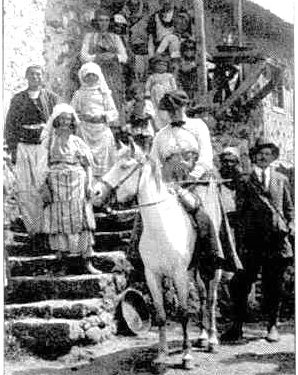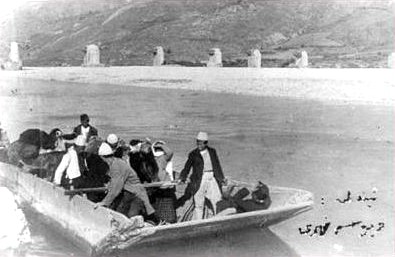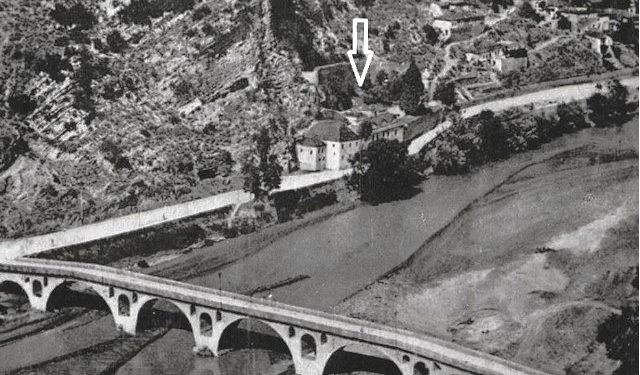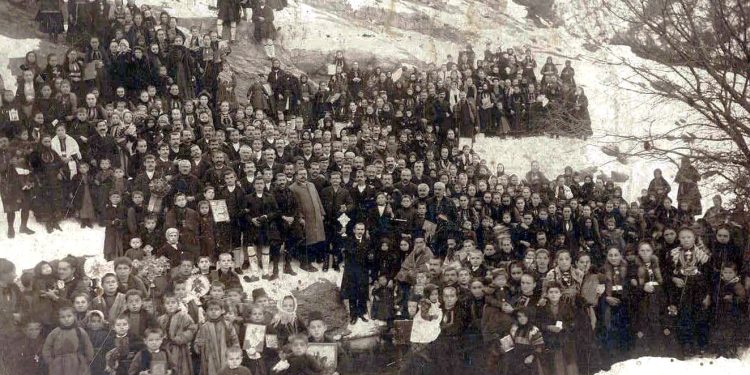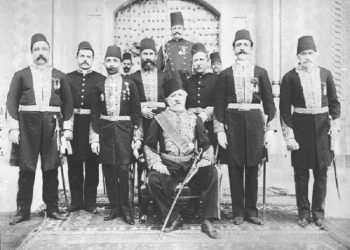Memorie.al / Exactly 58 years ago, the burning of a celluloid film gave me the opportunity to justify myself by writing a four-page letter to a girl who had just started high school and was waiting for the photos I had taken with some relatives, including her. That event also became the reason why, for time immemorial, Tatjana is my wife. What I wouldn’t give to have those unfortunate photographs in the many albums I possess. This happened to me another time when Ismail Kadare, Helena, and one of their daughters came to my house one night.
I was apparently an inept photographer, which is why the saying of the writer Susan Sontag often comes to mind: “…photographers are the active promoters of nostalgia.” Thus, not only did I learn the necessary lessons, but I also learned to have the greatest respect for photographers and their art.
I became a photography maniac, to the extent that I don’t believe there’s a second client at “Foto Venecia” in Durrës who spends money on photos like I do, as my friends jokingly tell me. It is understood that, willingly or unwillingly, I became a follower of the advice of the Florentine journalist Tiziano Terzani: “Just take photos, leave only your footprints.” I have the greatest honor and appreciation for photographers and do not miss any of their exhibitions or albums.
Therefore, whenever my dear friend, our theorist of photographic history, the first-class intellectual Qerim Vrioni – whose name, as he himself says from Arabic, means both generous and noble – brings me his books about this magical art, which according to the producer Andy Warhol, “…never changes, even when the people in it change,” I feel happy.
A few days ago, while I was in Tirana, where the renowned artist Bujar Kapexhiu (“Honor of the Nation”) had invited me to participate in the promotion of his two books, I met Qerim, who gave me his recently published book titled “Shkrepje të rralla fotografike” (Rare Photographic Snaps). As soon as I arrived home, I started reading it and continued until I finished, and without delay, I began writing something about the emotions and impressions it left on me.
With his characteristic simplicity, Qerim has set the subtitle as: “Essays and Articles on Photography.” But anyone who reads this book easily observes that, with his culture and passion for those who configured this art – which through the moment can achieve eternity (Bresson) – he presents himself as an author not only with great culture, historical knowledge, and analytical skills, but also as a true psychologist who manages to delve into the inner emotional states of both the characters, even if they are anonymous, and the men and women who took those photos.
This book is also an example of how articles and writings published here and there should be gathered like mosaic stones into a single volume. Author Qerim Vrioni, speaking about the beginnings of photography in Albania, rightly writes that; “Photographers with intuition understood that their art communicated with the public more easily than painting and sculpture. For this purpose, photographers utilized photography, this great and silent democrat, to raise the patriotic spirit.”
“Great and silent democrat” – is there a more significant definition than this by Qerim, who chose to start his book with the postcard created from the work of Theohar Gjini, dedicated to our hero Gjergj Kastrioti, whom they called a patriotic painter and for whom Faik Konica and Fan Noli, for their part, called him respectively “pure Albanian, true patriot” and “First Painter of Albania.”
Equally significant are the captions that Vani Burda from Korçë and Kel Marubi from Shkodër accompanied their photos with to distribute among the people, where the latter, through the Red Cross, donated 500 of his postcards to Albanians in America. All those who have spoken about the importance of photography have agreed that it must primarily be the heart and not the eye that defines it most objectively.
And if you look closely at all the writings in this book, you realize that our photographers, seeing more than just profit, aimed to influence people to awaken their national consciousness, the pride of being Albanian. The rare photo in terms of participation and composition by the photographer Thimi Raci, born in 1886, is enough – titled “Ten Couples from Dardhë,” immigrants who came to their families for Christmas, New Year’s, and the ‘Holy Water,’ lined up in clothing that is both urban and traditional, on a snowy day – to understand how connected they were to their homeland and their village.
The men dressed in European-style suits and the women in xibun (traditional clothing) signify that wherever they go, their heart is here, and everything good they take from there they bring here. In this photo, which must have sparked discussions at the time, the author of the book, after describing the clever placement, the foreground, the background, the light meticulously falling on their handsome faces, reminds us how beautifully the photographer Marco Scataglini had defined it: “It is you who make the photo, not the camera.”
And the result of this is the fact that the work of this Dardhë photographer, who had learned from the master Pero Kaçauni, not only presented Dardhë in albums and exhibitions, leading people to say that “Dardhë was within Europe,” but also gives it a place of honor in the History of Albanian Photography.
The pages of this book also include the work of two famous women: Edith Durham and Margaret Hasluck, one English and the other Scottish, to whom we Albanians owe so much – so much so that, regarding the former (after dedicating a book to her), I say that a statue of gold should be erected for what she has done for us.
From Durham, he has chosen the romantic photo “A boat (with open sail, my note) on the Buna River,” and he analyzes it with truths, setting fantasy in motion, and not avoiding the economic conjecture the country, especially Shkodër, was going through, and the trade links it had with Montenegro. The entire author’s sympathy goes to Mrs. Durham, who has in her fund about 450 photos of Albania and Albanians from the beginning of the last century, covering landscape, portrait, history, document, ethnography, geography, social life, etc. As such, he feels good when he borrows the words of former President Alfred Moisiu for her, stating that she was “One of the most outstanding personalities of the Albanian World…”!
From Mrs. Hasluck, Qerimi has mainly analyzed six very interesting photos, also snapped instantaneously, following the snapshot principle, where he distinguishes the Mirditor in front of the tower in Kthellë, residents from Central Albania, the Dibra-style castle in Burrel, the young shepherdess leading the flock, etc. These photos are quite impressive, but even more impressive are the comments of the book’s author, who is not satisfied with the techniques used during the photography but also gives us a credible picture of the moment they were created.
Stopping at the shepherdess’s photo, I cannot fail to quote his comment: “In Photo No. 6, a young shepherdess is depicted at the head of a flock of goats, walking on a car road, perhaps returning home after their daily grazing. Near her, two dogs are visible, protecting the livestock from wild animals. At the end of the flock, a man, most likely the girl’s father can be seen. As far as can be discerned, the shepherdess has a graceful face and a regular physique. Perhaps during one of the Scottish woman’s trips through the villages, the girl with her flock cut the path of the car, and she got out and happily photographed her along with the goats. The two dogs have turned their heads towards the girl as if asking how to behave with the travelers in front of them.” It is understood that this author, thanks to his talent, occasionally transitions into literary passages, and this adds to the charm of the articles in particular and the book in general.
Furthermore, renowned photographers are listed, such as the former forensic officer of Pogradec, Ardjan Fezollari; the lyricist of photographic landscape, Filip Vito, the icon of Gjirokastër photography, whose landscapes he compares in terms of geometry with the famous French photographer; Naun Vruho, who “would pass through the lens of his camera the special local symbols of the city, which have always given Berat a superior status.”
Kol Idromeno with that photo in the church, sometimes titled “Forgiveness” and sometimes “The Penance of a Sinner”; Dedë Jakova, who knew well the use of perspective; Ernest Baba, the winner of the international photography competition with that unforgettable photo “Touch with eyes”; Ilia Xhimitiku, who perhaps photographed the Gorica Bridge without knowing pictorialism at all, according to the aesthetic tastes of this current; Stefan Kaçulini of Durrës with “The boat returns to port”; and even that photo-sculpture “Lighting a cigarette,” where the characters are recognizable: Musto Gugaj and Abaz Haxhiaj, but almost not, the author of the photograph, etc.
Many photographers well-known to the public with their studios are also mentioned in the book, from which almost everyone has a memory, but the historian of our photography has extensively discussed them in other books. Qerim Vrioni does not fail to explain the technique that the photographers used, thus the photographic cameras of the time and the methods of development, the solutions, the printing of films in the darkroom, from glass plates to celluloid films or today’s digital ones. He shows the difficulties that photographers encountered during their work and makes comparisons between black and white and color photos.
He also brings curiosities from the personal lives of his characters, and this embeds them even better in the memory of the readers. And they, with their work full of national conscience, honesty, and passion, wrote the history of Albanian photography, just as the noble Qerim Vrioni tirelessly does, who seems to tell us that their motto was the dictum of the German-Australian Helmut Newton who said: “The desire to discover, the will to excite, the pleasure of capturing the moment – these are the three concepts that summarize the art of Photography.” / Memorie.al






